Confessions of a Pizzahead: DIY Dough

I think it’s safe to say that I have officially become a pizzahead. After moving from San Francisco to Los Angeles and trying a few different wood-fired pizza places out, along with being given some pretty ridiculous suggestions on par with the bowling alley pizza party fare I had as a child, I had come to the sad conclusion that there isn’t a single slice in all of LA that really tickled my fancy. I didn’t even know what I was looking for, I just knew it was this one very specific type and I couldn’t find it. I know now that this type is the quintessential Neapolitan delight of wood-fired chewy char heaven.
As soon as I had a word for what I was looking for, I hit the books for a fast and furious lesson into the world of pizza making. Moreso than just learning about pizza, I learned about the fundamentals of dough--and that, to me, was priceless.
I’ll expand on the principles of Neapolitan pies in future posts but for this very first dive into pizza making, I’m going to walk through a simple pizza dough recipe that I’ve used for everything from flatbreads to baguettes. I also want to preface that there are a handful of ways in which you can make pizza but after a while, you realize they’re all pretty much different routes to the same spot in the road. This isn’t about perfection – it’s about education. And fun.
You’ll find most recipes use an obscene amount of flour because they’re for making 3-4 smaller pies or 2 thicker pies. Depending on what I want for the meal, I’ll cut it in half, thirds, or even quarter the recipe for a single thin-crust 10” pizza. The recipe below should yield you one medium-sized medium-crust pie.
INGREDIENTS
1 teaspoon Yeast
1/2 teaspoon Sugar
2 1/3 cups All-purpose flour
1 teaspoon Salt
Warm water
METHOD
Add 1 teaspoon of yeast and ½ teaspoon of sugar to a ¼ cup of warm water. Mix gently and let it do its thing for about 10 minutes. You’ll know it’s ready when the liquid becomes foamy.
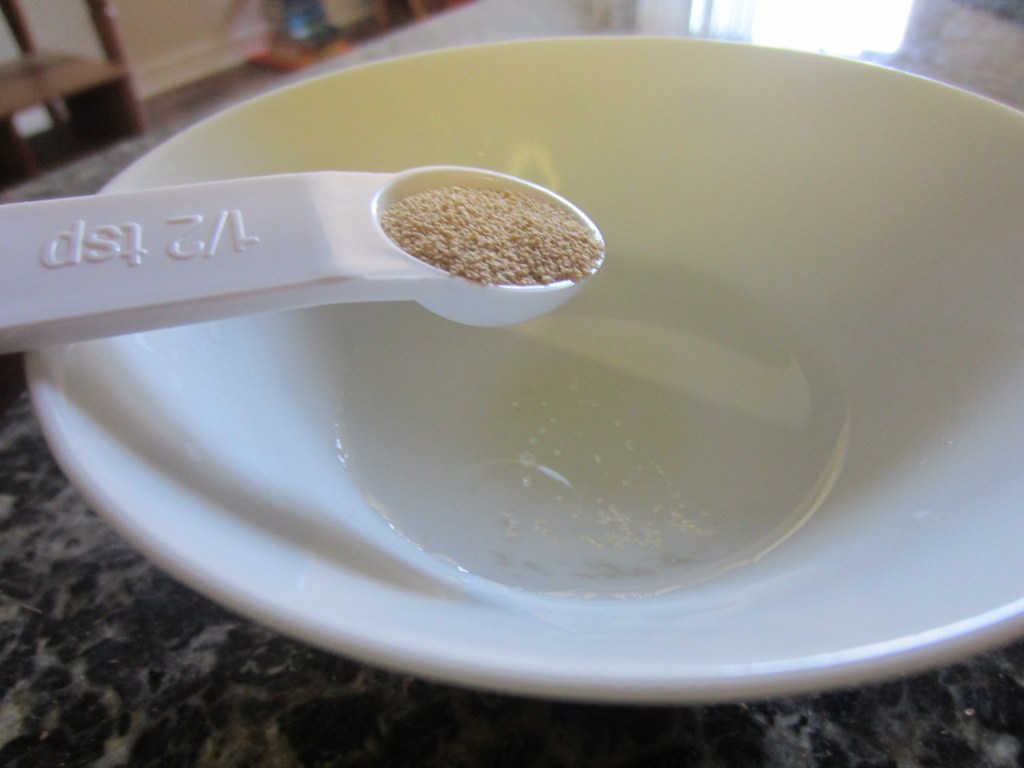
Meanwhile, put 2 1/3 cups of all-purpose flour in a glass bowl. Add 1 teaspoon of salt. You can also add oil but that’s totally optional. It’s just a form of fat and is always subject to debate in the pizza world. If you choose, add ½ tablespoon at the same time you add the other wet ingredients.
Mix the salt and flour up a bit with the spoon, add the oil if you want, then add the yeast mixture and 5 ounces of warm water.
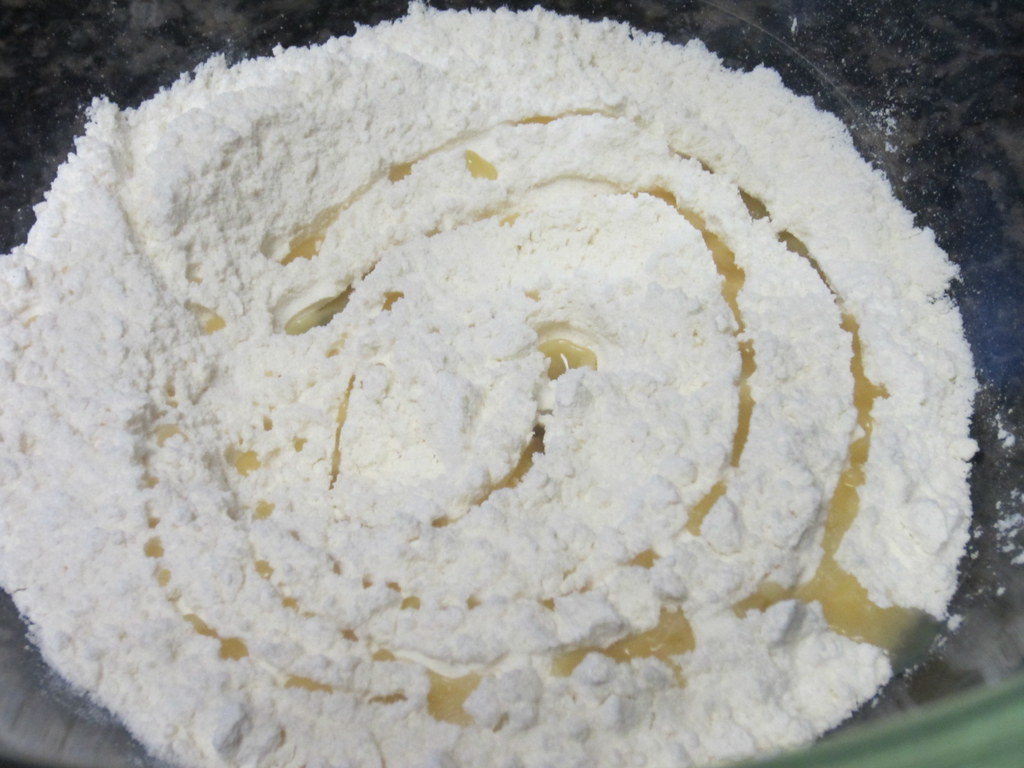
Stir the mixture in the bowl with a fork or spoon until you’ve got as much combined as you can. Then dump it all out onto your surface.

KNEADING
Truth be told, I had the darndest time with kneading techniques when I was first learning how to make pasta dough. I had never properly learned how to knead. If you already know how – I’m very happy for you. If you don’t, the best way I can describe it is to continuously mold all the loose bits together until you get a cohesive mass. Then, in a wax-on/wax-off movement, roll the ball back and forth with your palm, rotating hands each time. If the ball is still too sticky, add a tiny bit of flour each time. Just be careful – you can always add flour but you can’t take it away if you’ve gone too far.
Once you’ve kneaded for a good 5-8 minutes depending on the size of your dough ball, the end result is a perfectly smooth and soft but slightly tacky ball. You then want to pinch the top of the ball down towards the bottom as you can create a seal to keep in the air, and repeat that a few more times as you get closer to the seal.
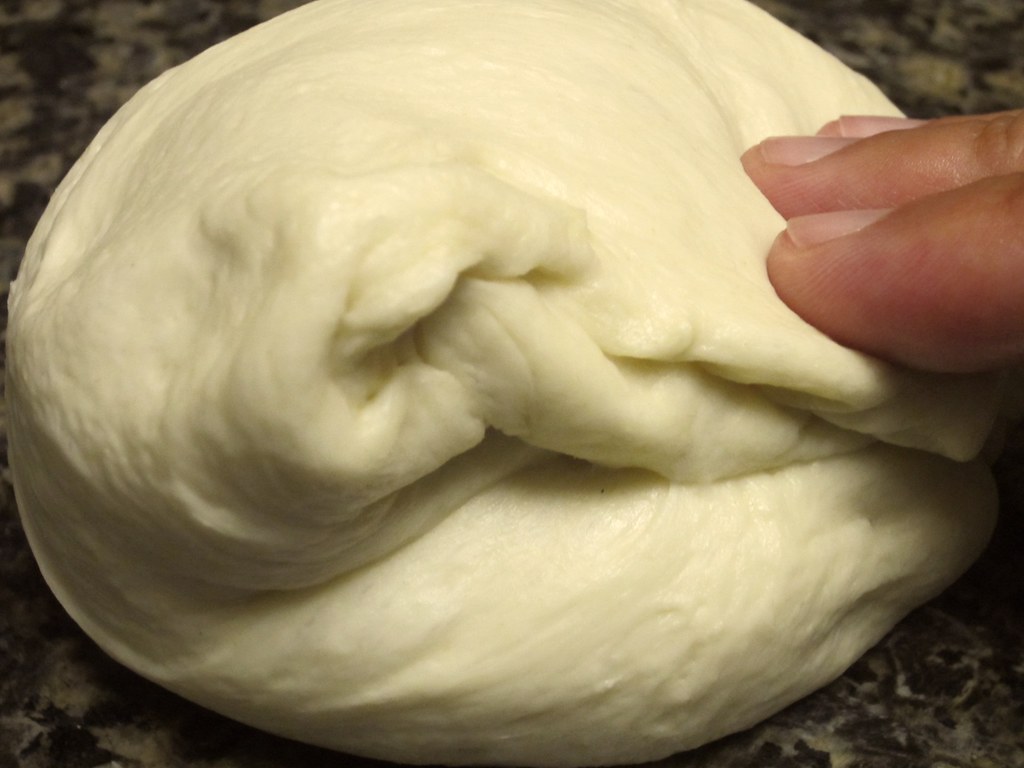
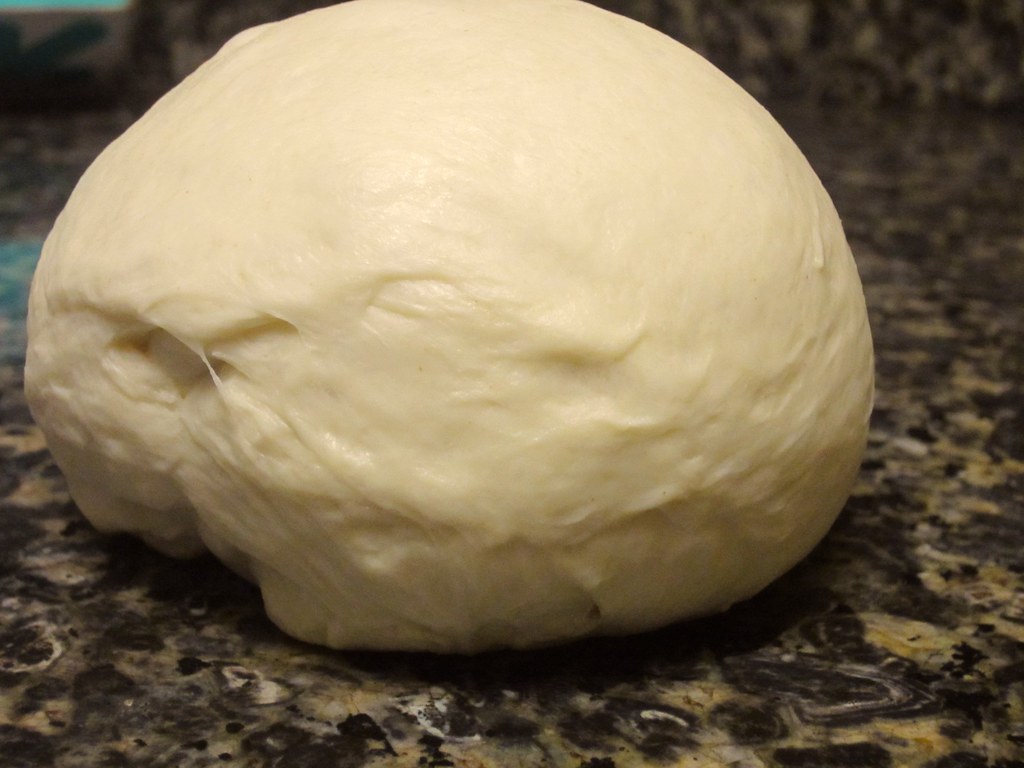
When you’ve rounded off your dough, place it back into the original bowl and cover with a dishtowel. Leave for about 1.5 – 2 hours until it’s doubled in size. Now you have to re-form the dough into a new ball so it can complete its second rise. My recommendation is to allow at least 30 minutes before you’re ready to start making your pizza.
THE OVEN
Most likely you do not own a wood-fired oven or a jerry-rigged Weber with a hole in the side so you have to do as we plebeians do and use your conventional oven. And since your oven racks probably aren’t made out of soapstone, you’re going to need a pizza stone or an inverted baking pan wrapped in foil. Get your oven as hot as you can get it and let the stone or pan heat up for a good 30-60 minutes. You want the effect of the dough hitting the high temp underneath so that you build a good crust, preferably with some char.
Once your oven is hot enough (500˚F), get your ball of dough that has just completed its second rise, coat it liberally with flour, and start to gently push it down flat with your fingertips. You don’t want to push out all the air, but you can see how the nice air bubbles in your dough are present.

Slowly start to stretch the dough outwards in a circular motion until you get to the diameter and thickness you want. Make sure to keep the center of the pizza at the same thickness of the outside otherwise you’ll have a soggy mess in the middle.
Place it on your peel and with one swift motion, shake it on to your piping hot baking surface. Many recipes will say to add semolina or cornmeal to your peel to prevent the dough from sticking but I’ve found if you flour the dough as you stretch it, you don’t need any extra steps. *Note: I tend to par-bake my dough for a few minutes before adding toppings so that I can balance the cooking time of the toppings and dough better.
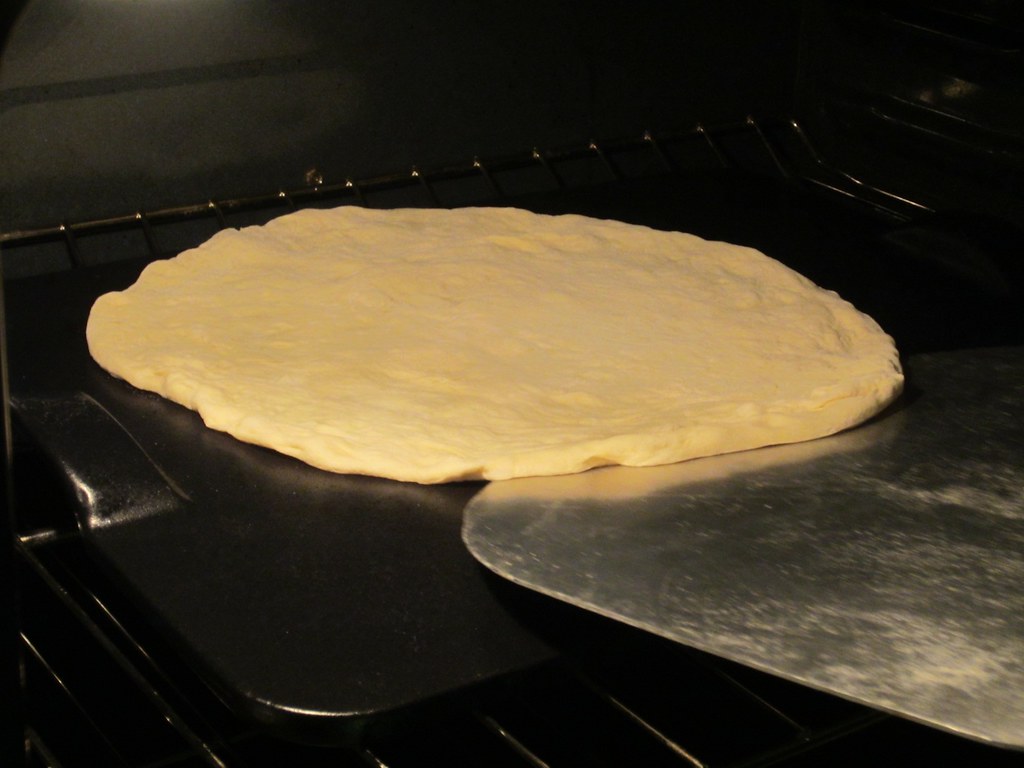
TOPPINGS
Obviously, toppings are totally and utterly subjective. Since my particular passion is Neapolitan, and this style of pizza will be my primary focus going forward as I visit some great wood-fired Neapolitan style places in the LA area, I’m showcasing the simple yet delicious toppings perfect for a Margherita: a sweet and salty tomato sauce, fresh basil, and delicate burrata cheese. The traditional cheese is of course mozzarella di bufala (buffalo’s milk mozzarella), but I am in love with burrata so I use that instead. I also use red onions sometimes because, while not traditional, I love the flavor it adds.

You can find King Arthur flour at Whole Foods but I’ve found Trader Joe’s all-purpose works just fine. San Marzano tomatoes are required for an official Neapolitan Margherita but I’ve come to realize there isn’t a tremendous difference between this and other domestic, organic brands. I buy DiStefano burrata from Joan’s on 3rd because it’s made locally in Baldwin Park by a true Italian on his family-owned farm and it’s the only product they make.
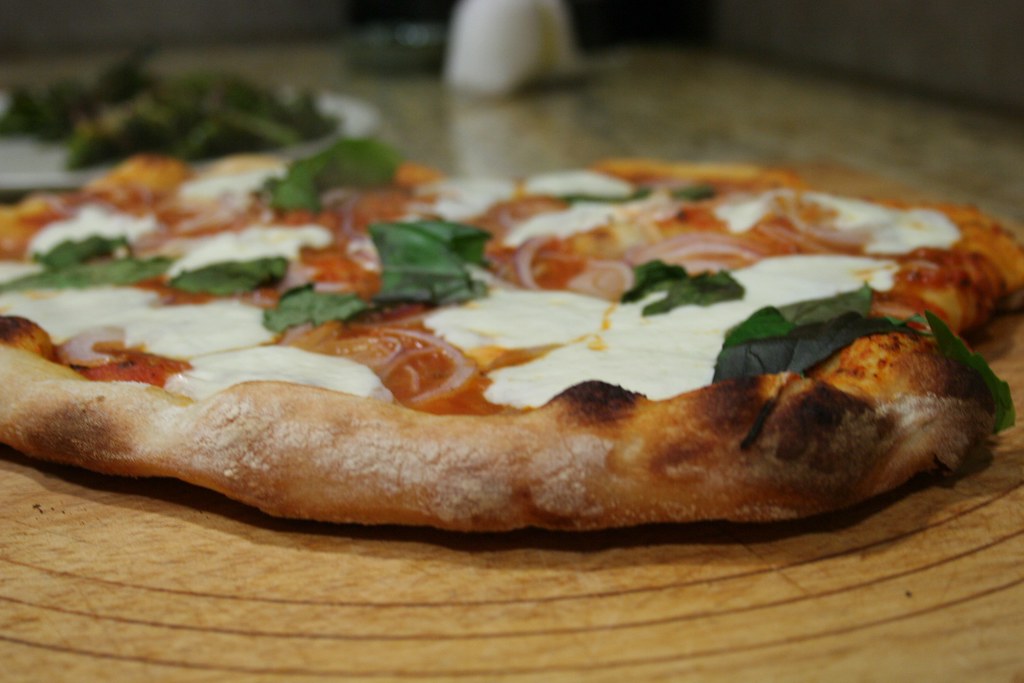
After cooking your pie for about 10 minutes depending on how hot you let your oven get and how loaded your pizza is, it should look like this. The outside has that nice crispy char while the inside is still a bit steamy and chewy.
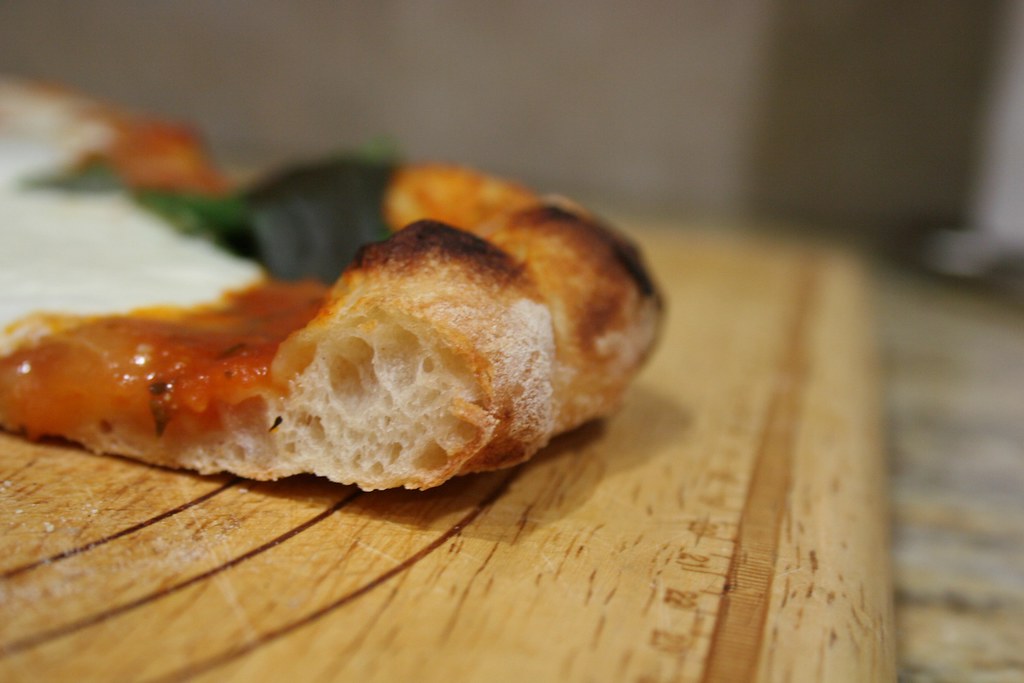
Going forward, I’ll be alternating post topics between some of my favorite ways to use this pizza dough recipe and some of my visits to restaurants with delicious pizza pies.
Next up: my review of Mother Dough, a pizzeria in Hollywood.
